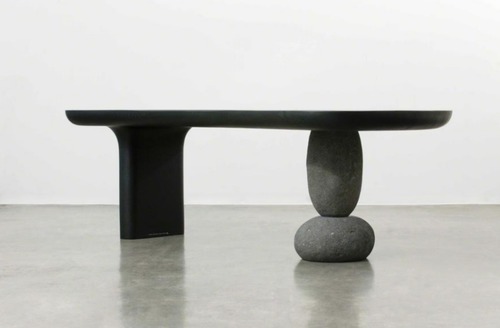Mar 15, 2013 | art fairs, features
VOLTA NY is a showcase of individual minds and hands – hands that painted, sculpted, collaged, and sewed something incredible to be here. It’s held annually in both New York and Switzerland, and last week it took up two stories of 82MERCER in SoHo, and more than 22,000 people showed up.
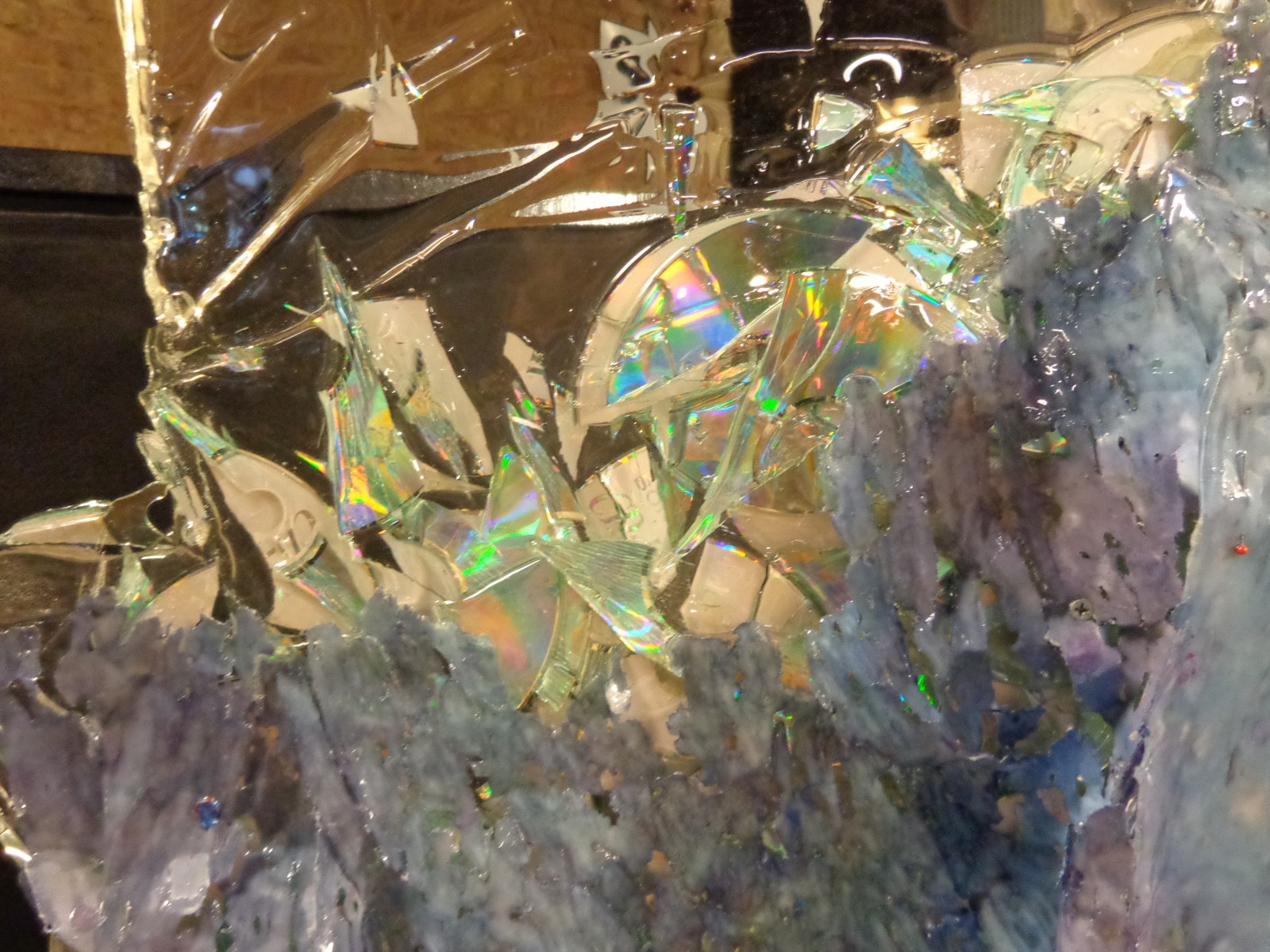
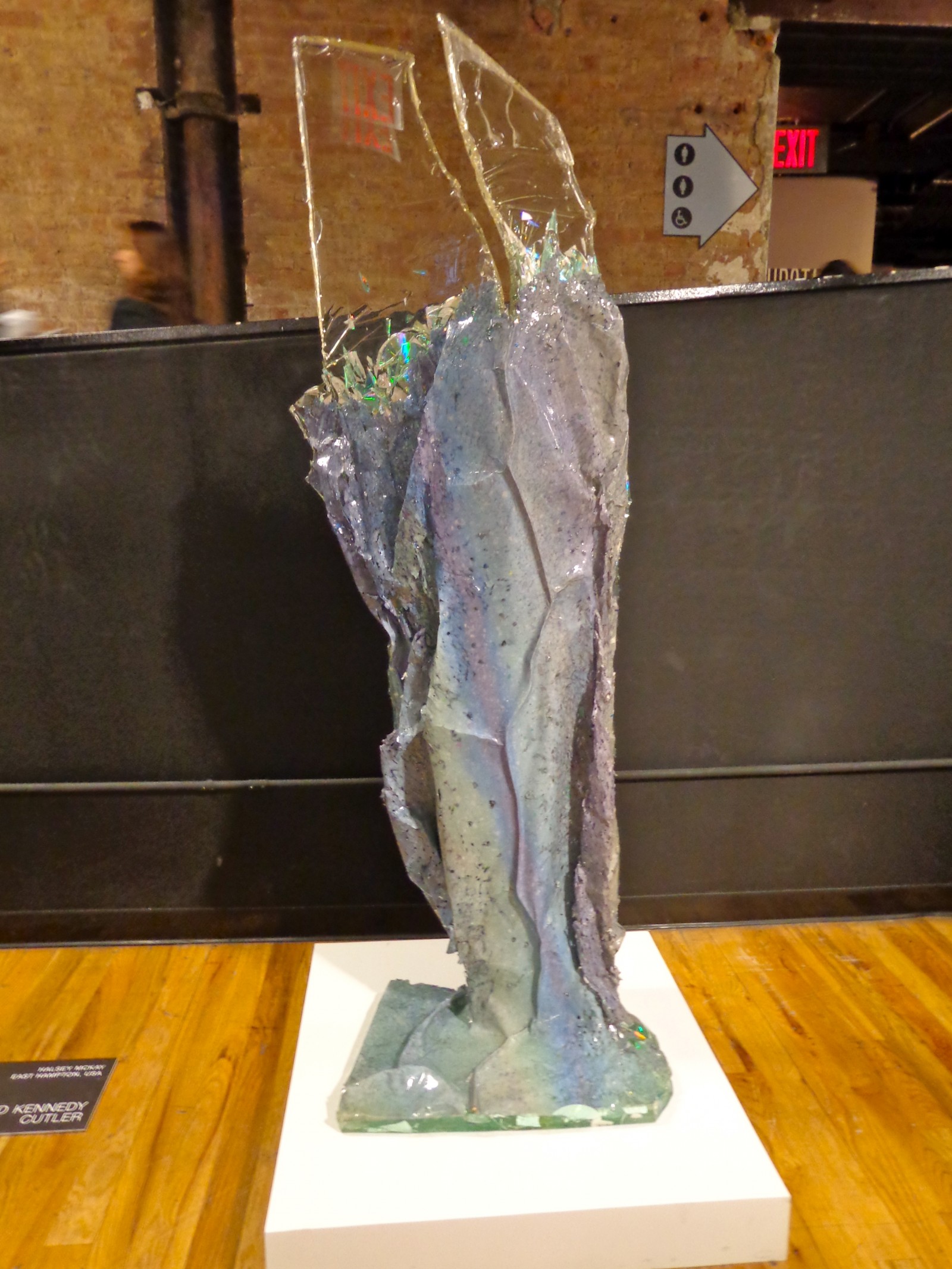
David Kennedy Cutler, represented by Halsey McKay, East Hampton.
The show’s design lead you around through two rows of art per room, and even though it was a bit cramped when tons of people showed up, the art took up most of the space, and the artists were sometimes there to greet you and discuss their work which is very exciting but also kind of nerve-wracking David Kennedy Cutler’s sculpture stood right in the fair’s halfway point, greeting visitors as they walked towards the stairs and up to a whole new level of art – this one with higher ceilings and exposed brick walls.
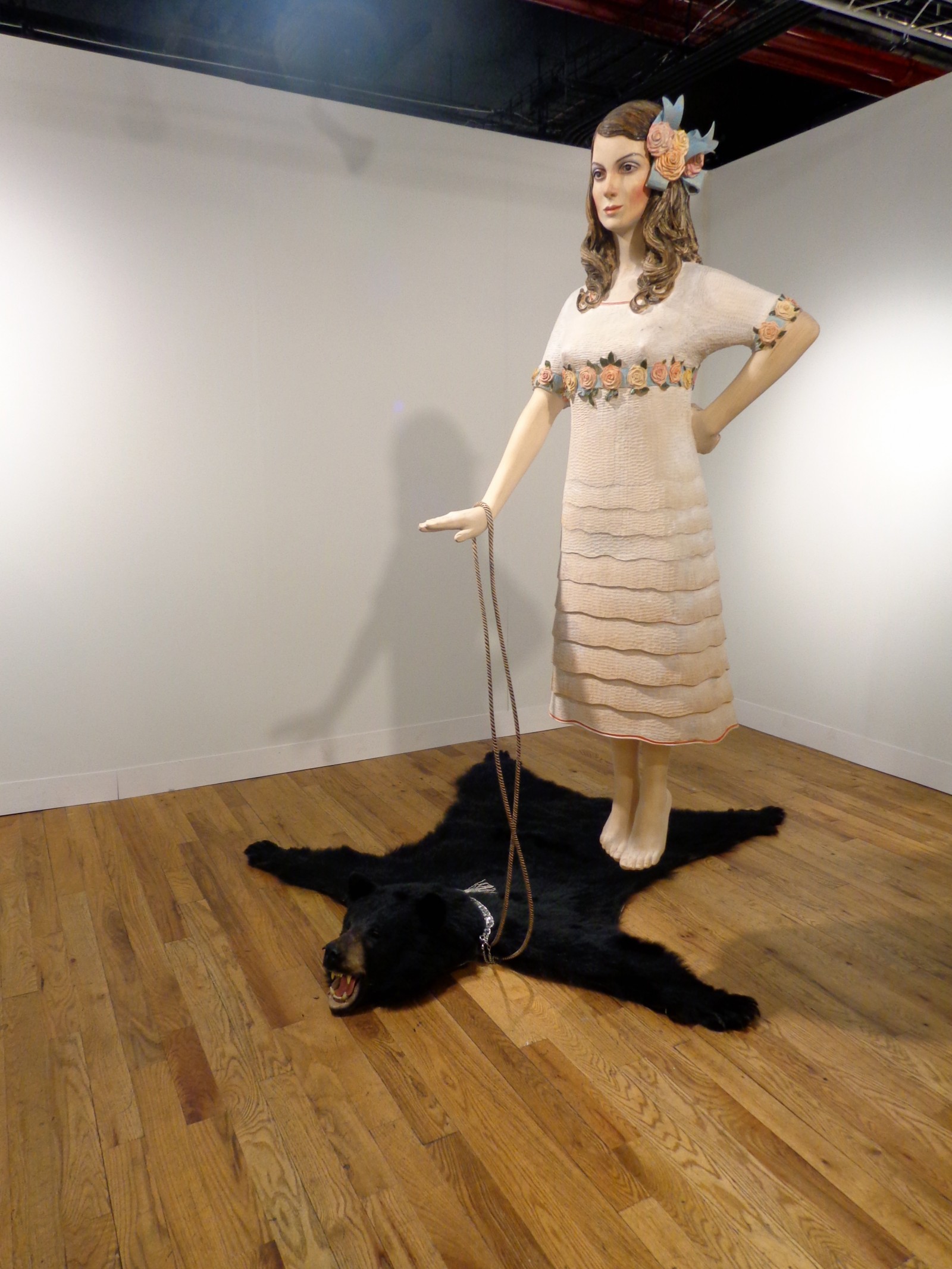
Marc Fromm represented by Jarmuschek + Partner, Berlin.
A whole crowd was gathered around Marc Fromm’s levitating piece – the girl somehow miraculously held up by the seemingly slack rope draped causally around her wrist. The bear and the girl together make for an interesting pair: the bear’s furry face is still somewhat ferocious looking, and even though the flying girl is all dolled up with flowers and everything, there’s hardly any expression behind her empty doll face.
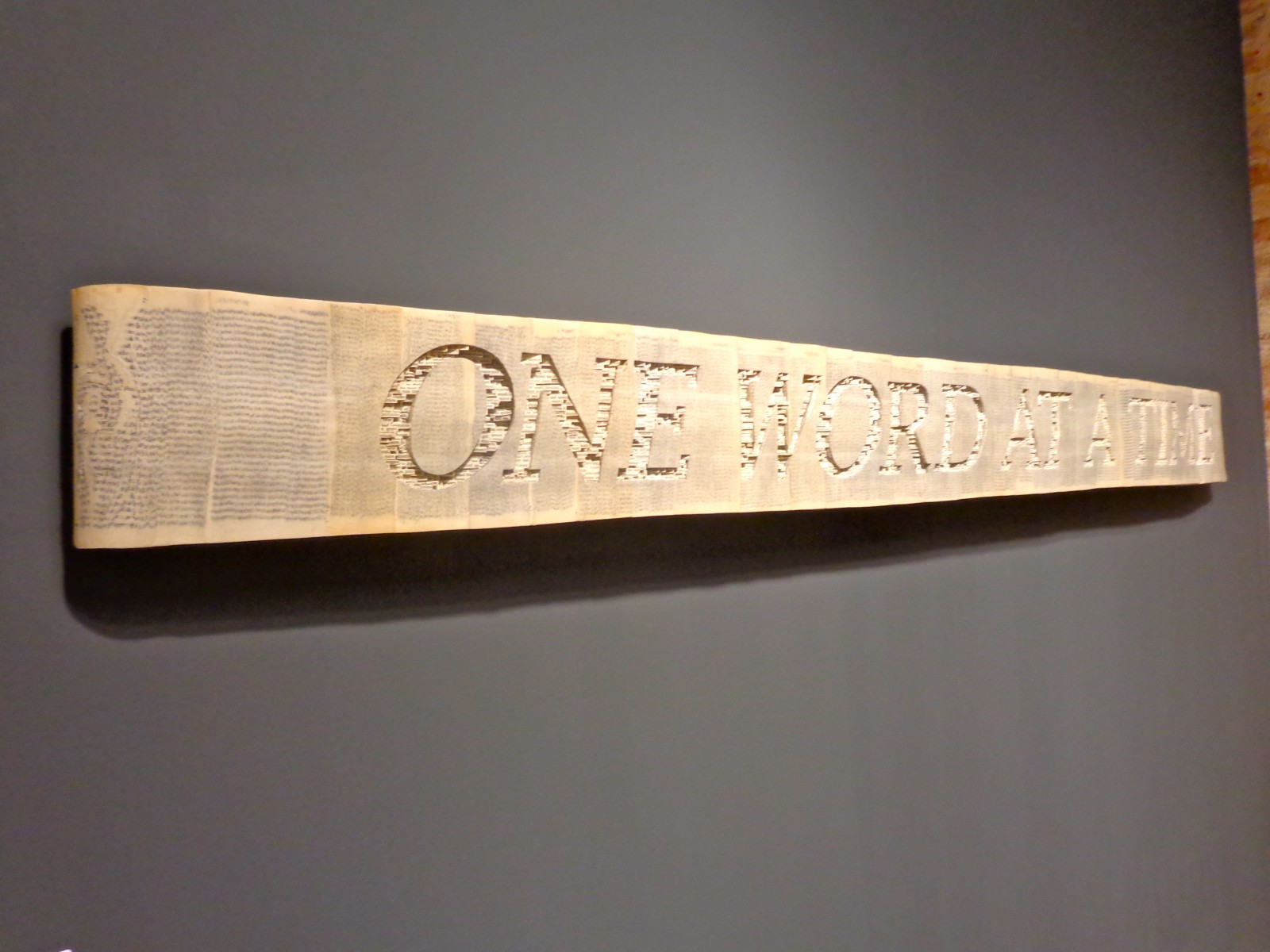
“One Day at a Time,” 2012 (paperback books, acrylic varnish)
by Brian Dettmer represented by Kinz + Tillou, NY
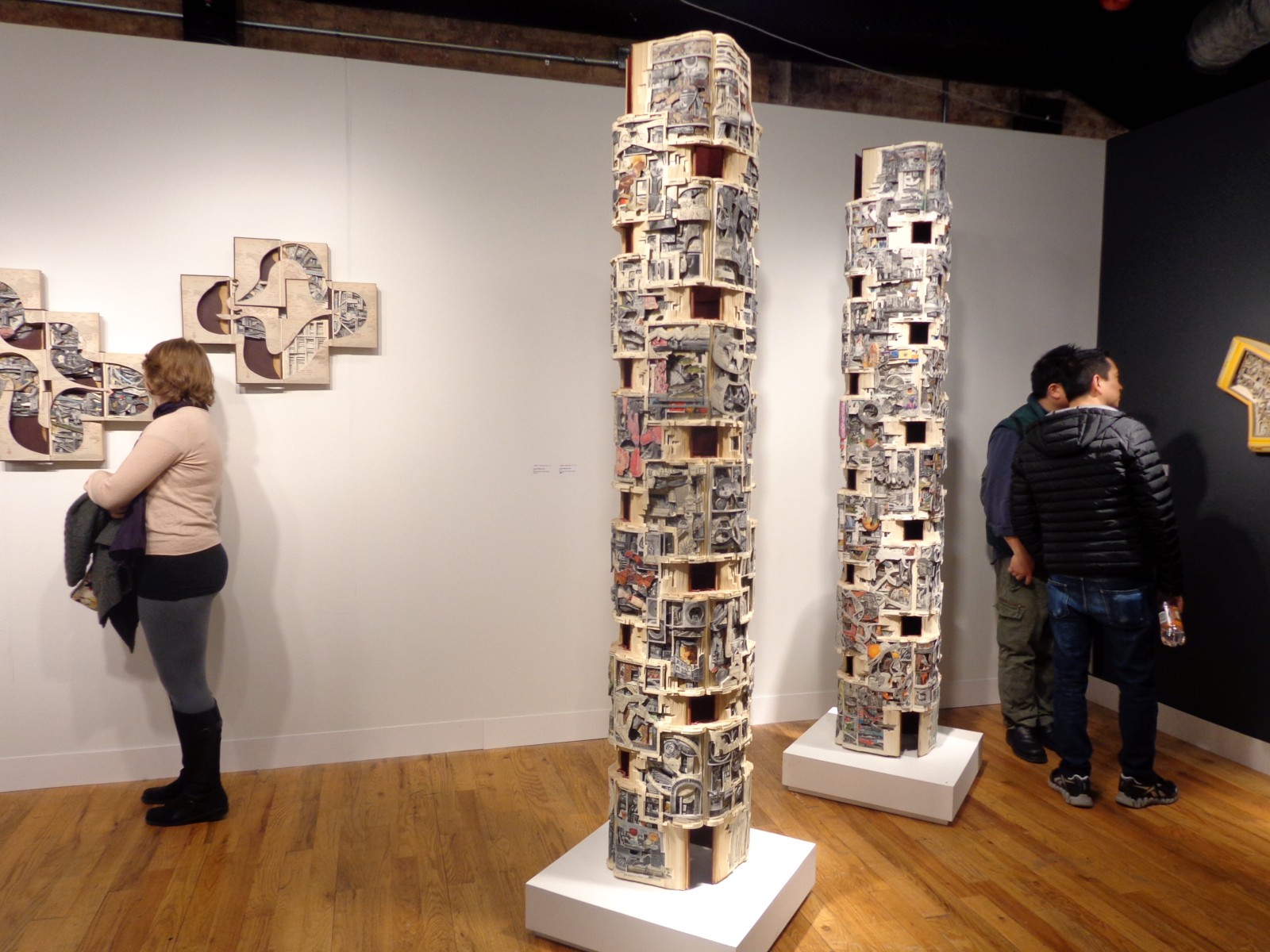
“An Encyclopedia of World History” by by Brian Dettmer
Brian Dettmer’s works appeared the most labor-intensive at VOLTA. His towers and wall sculptures are made from encyclopedias and involved hours of pouring through old books and carefully cutting and rearranging. “One Day at a Time” actually reads ‘One Word At A Time’ with each of the letters carefully filled in with thousands of individually cutout letters.
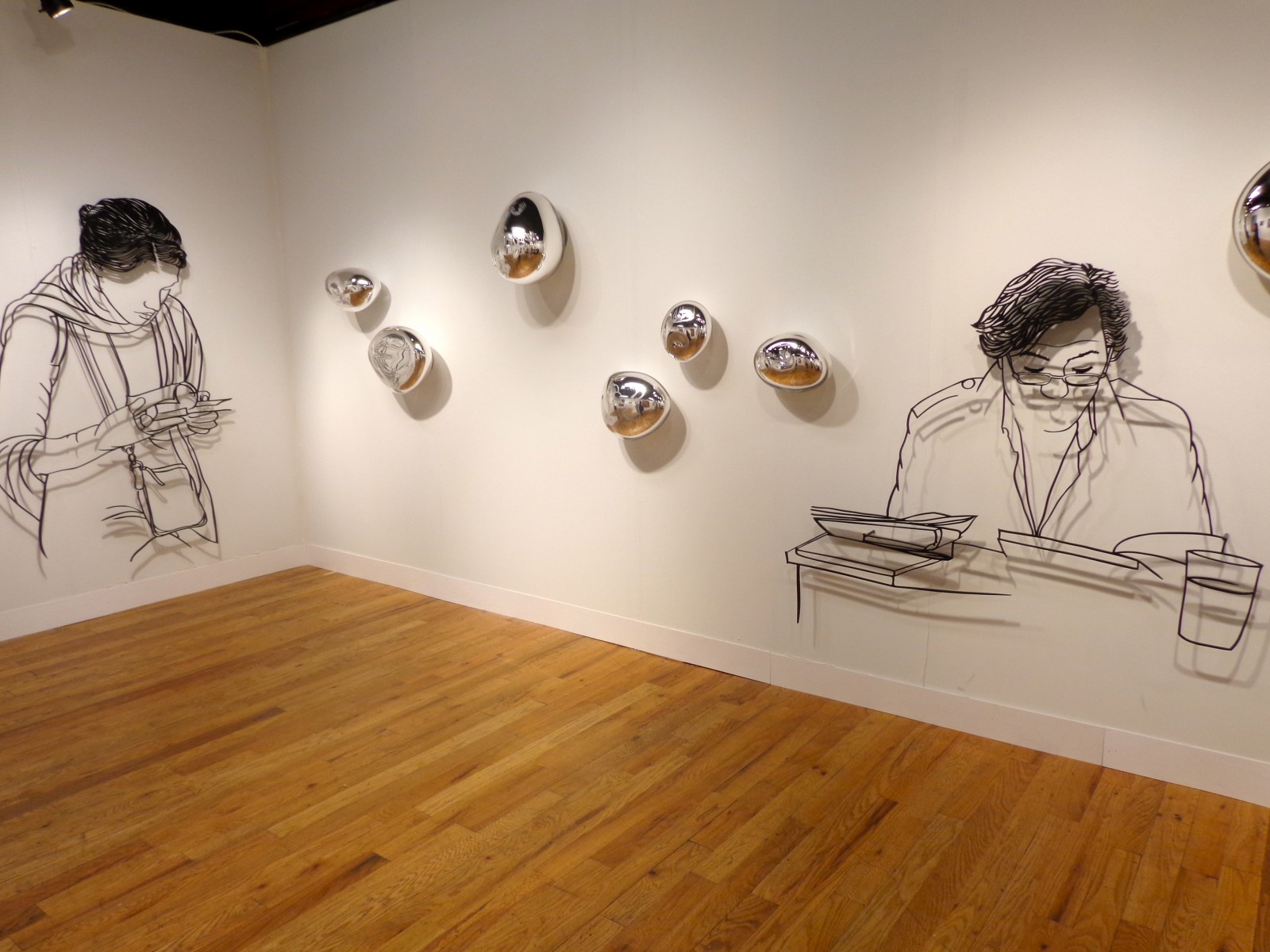
Hae-Sun Hwang represented by Gallery Simon, Seoul
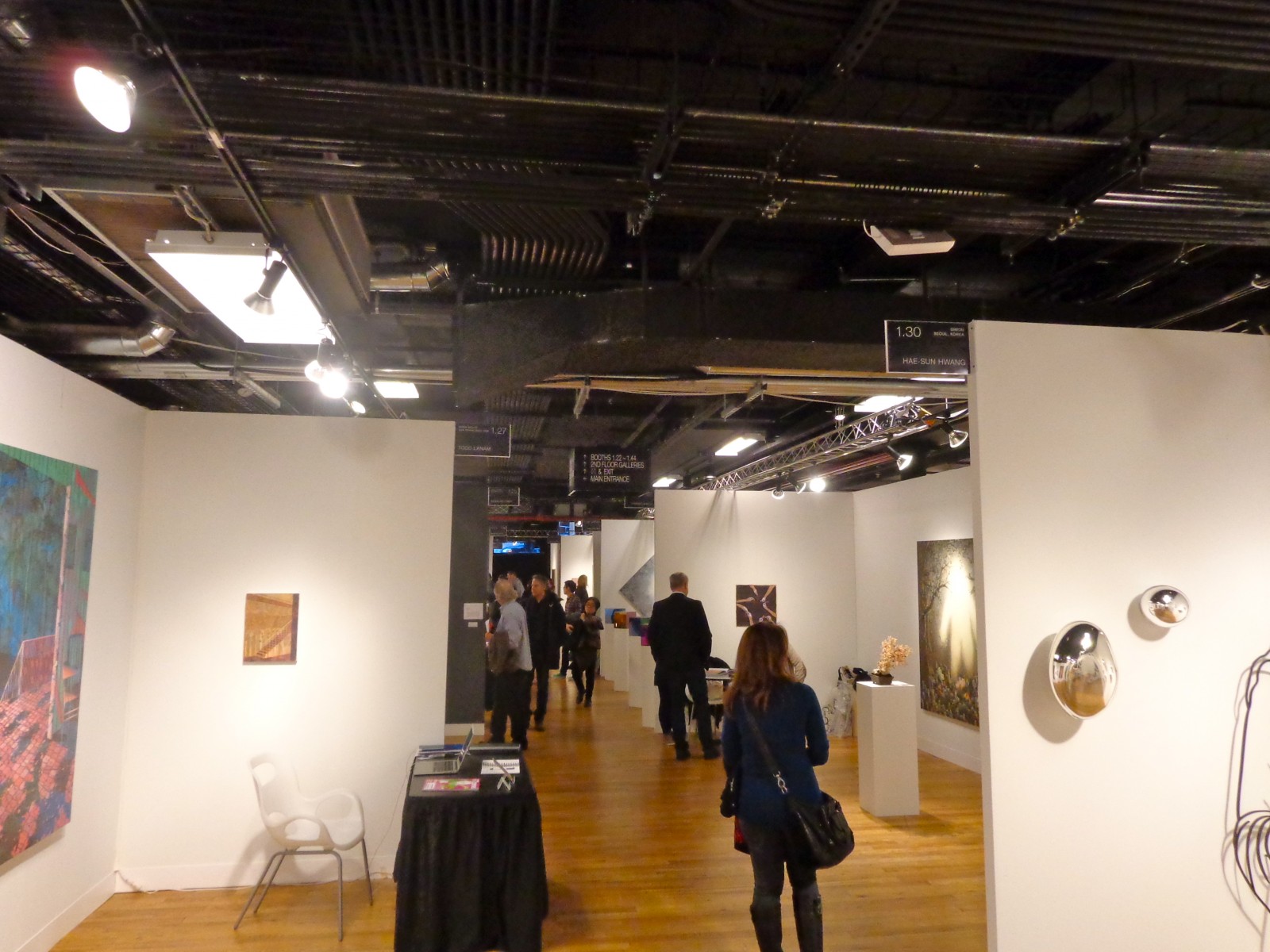
The SoHo area around VOLTA was busy the entire weekend, the whole city buzzing with art fair fever. And even though thousands of people walked through the same space in four days, it somehow still had a personal feel. Each booth was dedicated to one artist’s work so viewers were individually immersed in different artists’ styles as they walked from one white-walled booth to the next.
“People were already talking about it before we even opened,” said Amanda Coulson, VOLTA’s Artistic Director. “People were already talking about it before we even opened…and then the quality of the space itself, with the wooden floors and huge daylight windows, is just putting everybody in a fantastic mood. Along with the solo artist concept, which is now being picked up more strongly at all the major events, visitors are leaving with only enthusiastic comments. Suffice to say, we are extremely pleased.”
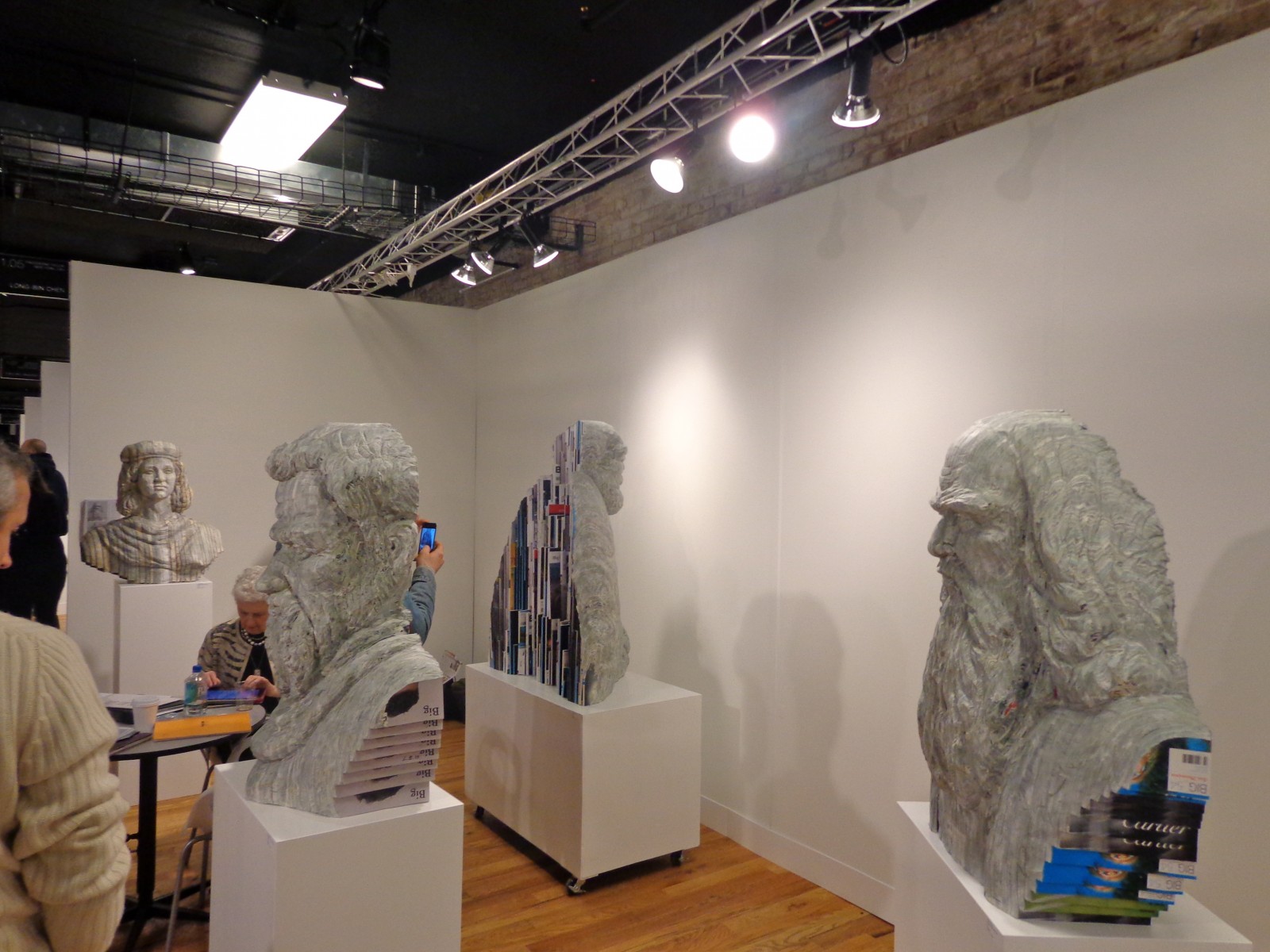
Long-bin Chen, represented by Frederieke Taylor Gallery
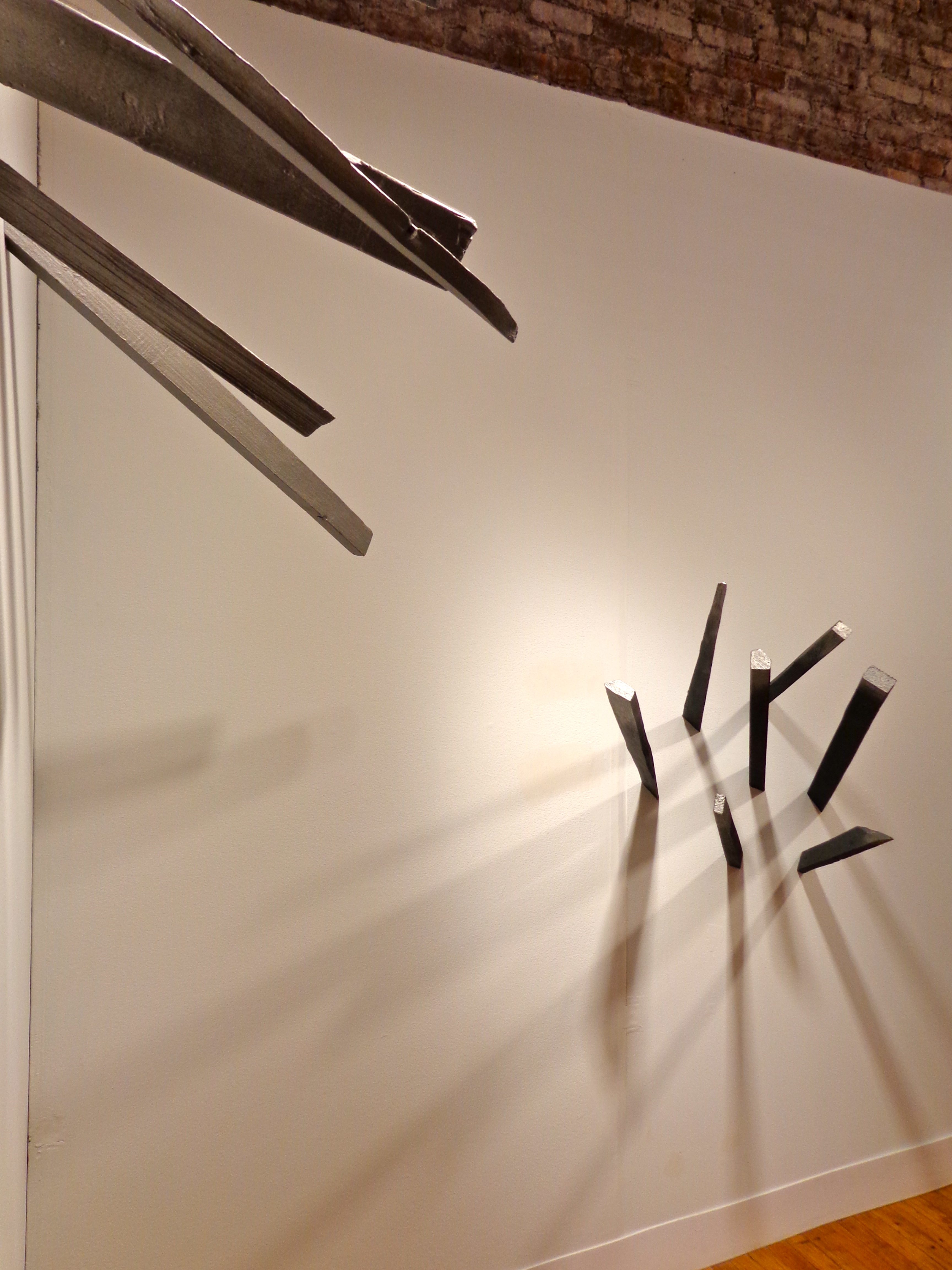
by Sarah Hardesty
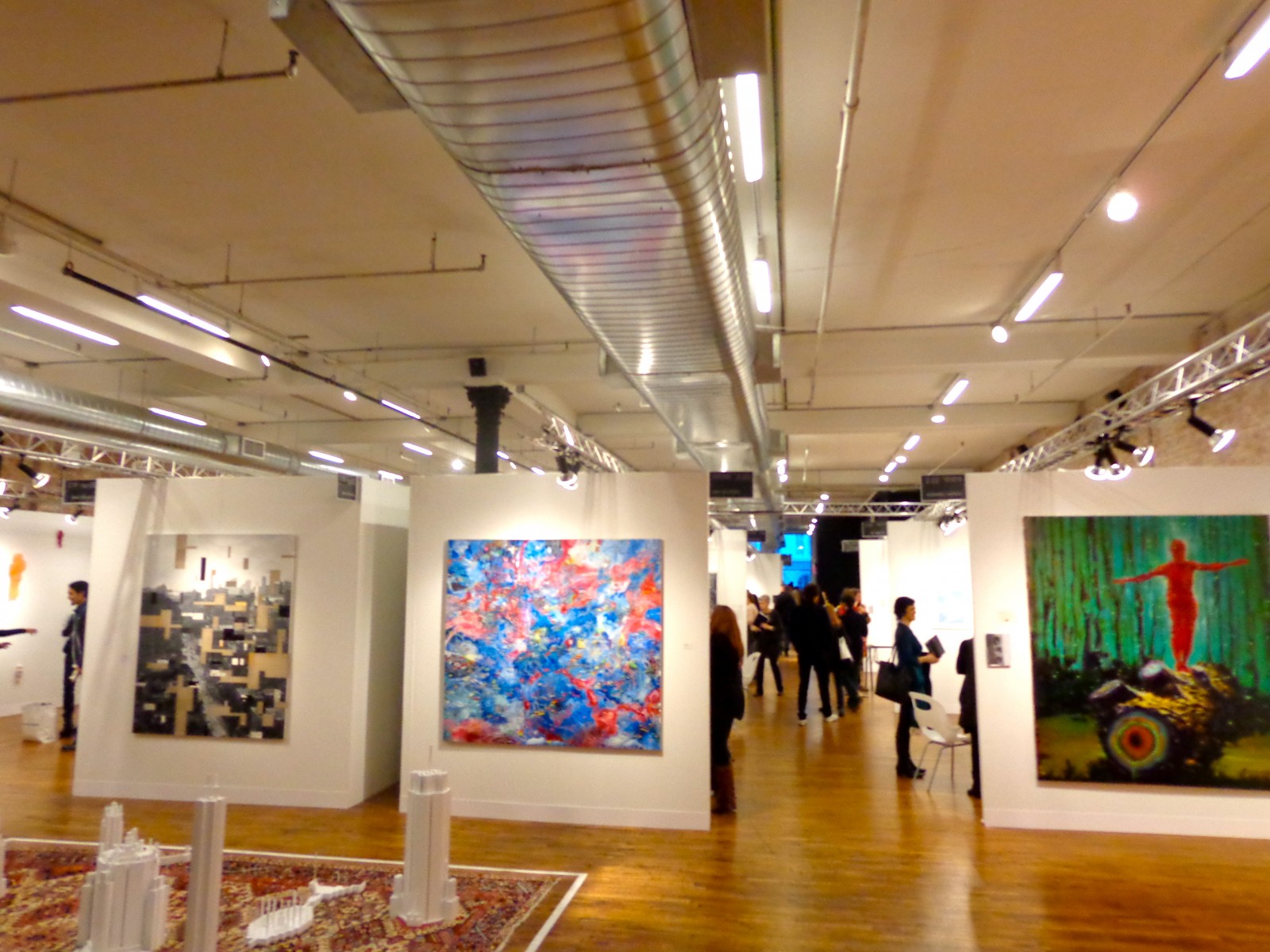
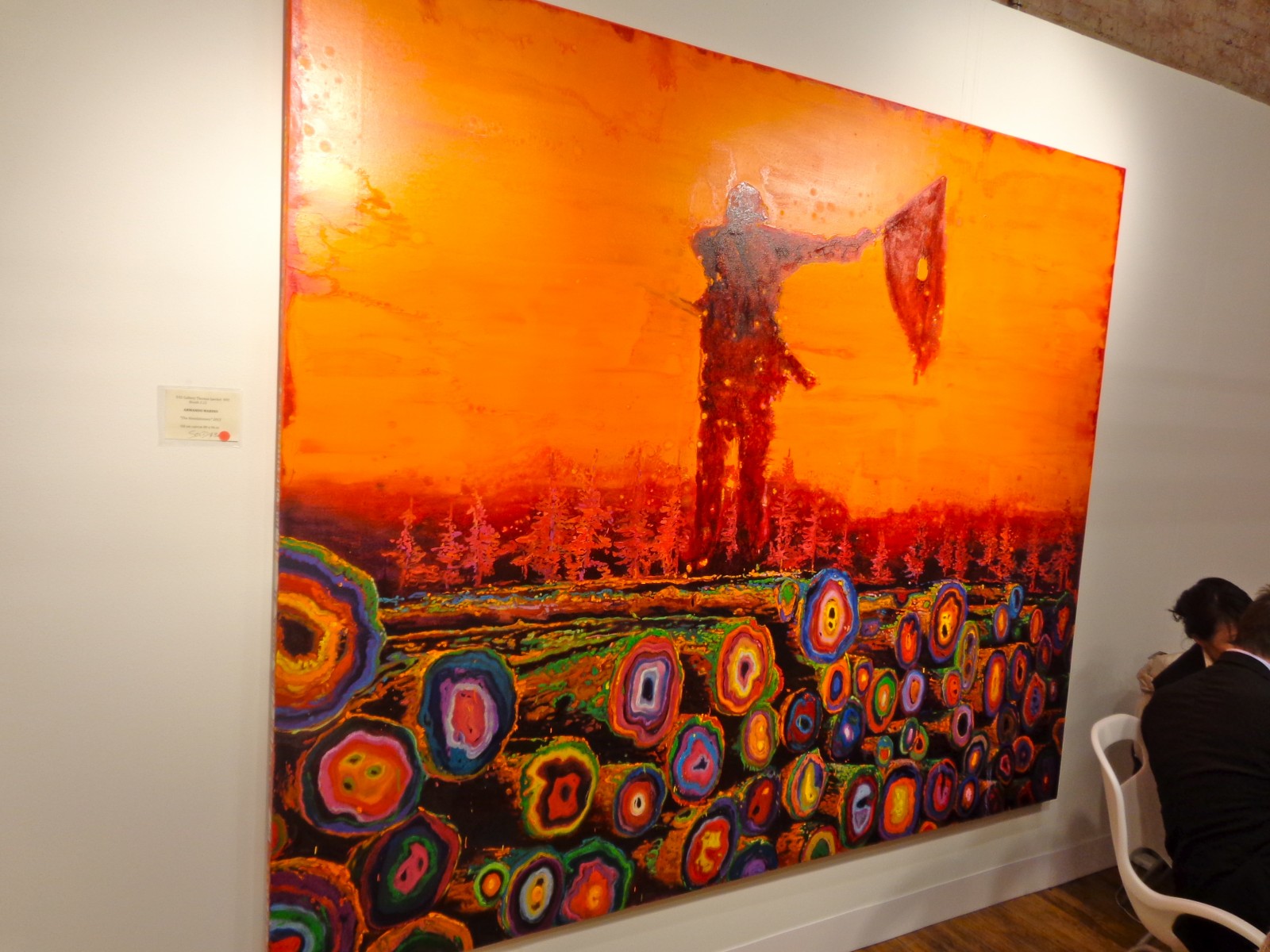
Armando Marino’s “The Revolutionary,” 2013
oil/paper
Represented by 532 Gallery T. Jaekel, NY.
A Flickr album for VOLTA is currently in the works, and expect a lot of future descriptions of the incredible work that was there.
See more of VOLTA on their website.
Mar 15, 2013 | photography
Dave Engledow is recording his daughter’s childhood in a way more creative than most, but then again he is a professional photographer. He calls this series World’s Best Father, and manipulates pictures of him and his daughter doing dangerous things together – the kinds of things people call Child Protective Services about as soon as they’re out the front door.
Keep an eye out for his not-so-deserved World’s Best Father mug that makes an ironic appearance in every scene.
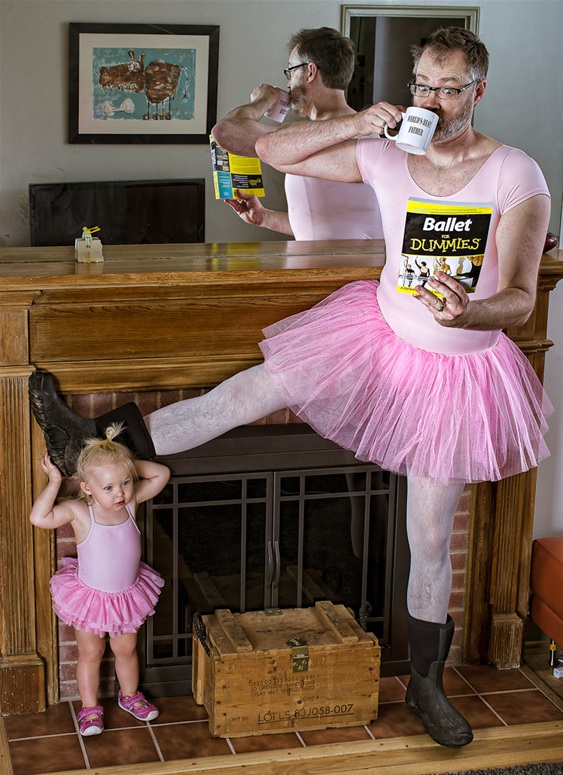
His tiny daughter Alice always has the most adorable expression on her face, while Engledow’s is purposely overdramatic and hilarious, wide-eyed in wonder or weeping like a sad clown might. He endearingly calls her by her full name, Alice Bee, on his Facebook page and writes, “I love photography, and (to paraphrase Garry Winograd) my main drive to shoot is fueled by my eternal curiosity to see what the world looks like in photographs. I am fascinated by light and shadow, form and shape, lines and composition.”
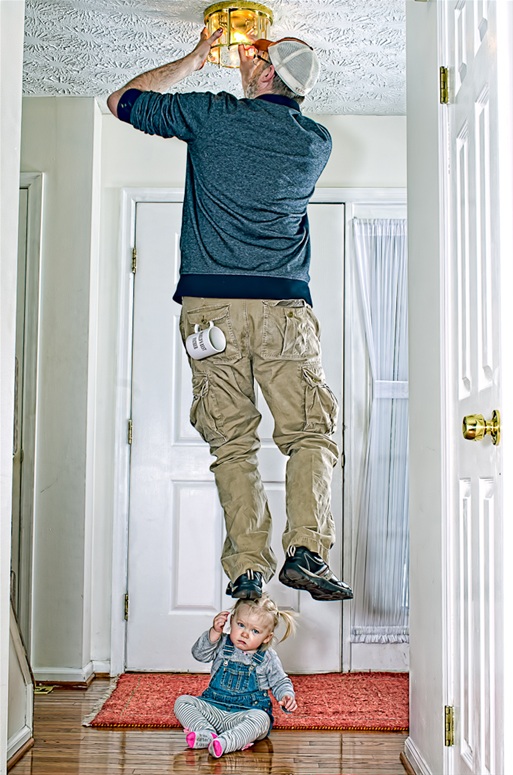

Alice always looks like she’s having a good time though, except in scenes where she’s forced to do chores or fulfill her father’s expectation to raise an Olympic swimmer. Her bright blonde hair is always styled to fit the part too – tied up in cute little buns and ponytails on top of her head, and extra wild when she’s on the loose.
The manipulation on the photos matches the detail put into comprising the scenes too, often with a shiny surreal sheen over them that somehow just makes the scene look more realistic. In one photo he’s scolding her through an iPad even though he’s right across the couch, but Alice doesn’t care because there’s no way she’s eating those peas.
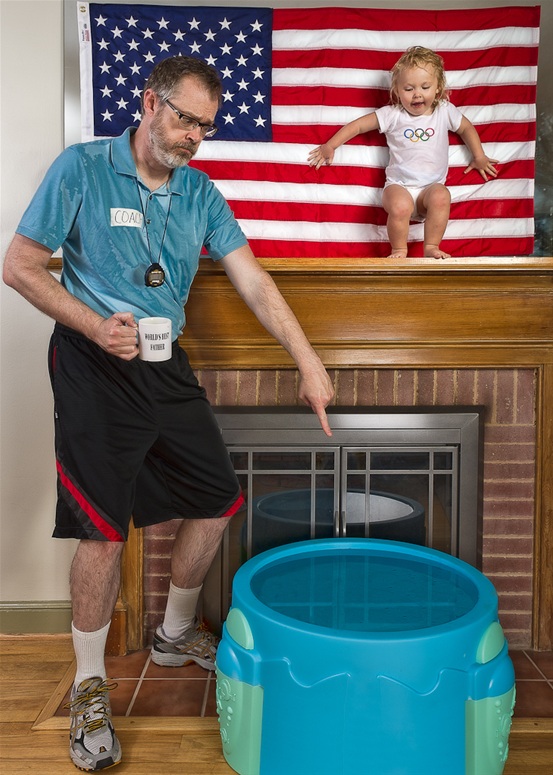
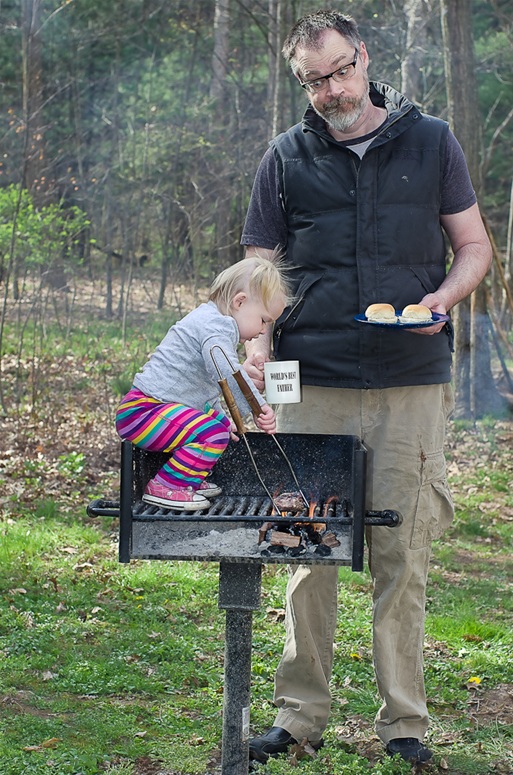
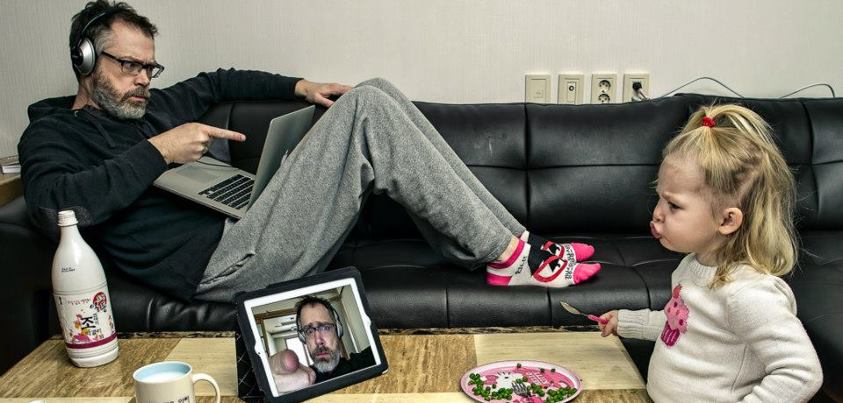
Images from Joe’s Daily, and the artist’s Facebook page. Like his page to keep updated on Alice’s new adventures.
Mar 14, 2013 | design
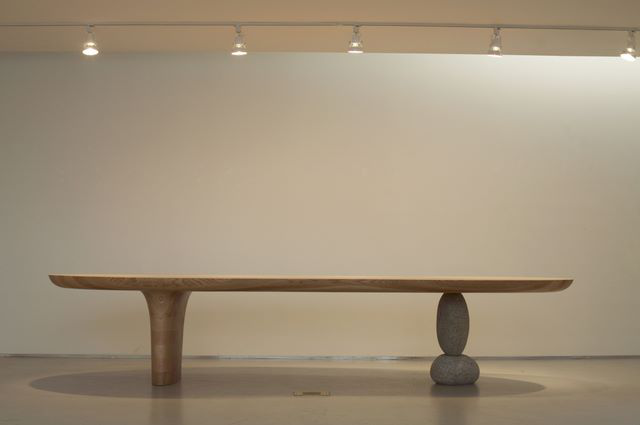
Image from artist’s 2008 solo exhibition at Gallery HANGIL, in Paju, Korea.
Byung-Hoon Choi makes seats and benches that look too precarious for real use, but you can sit on them as long as they’re not part of an art exhibition. Someone might yell at you.
Some of these seats are made of one smooth solid piece of sculpted wood and others balance that wood on stones, playing with gravity as if it were a separate medium all its own.
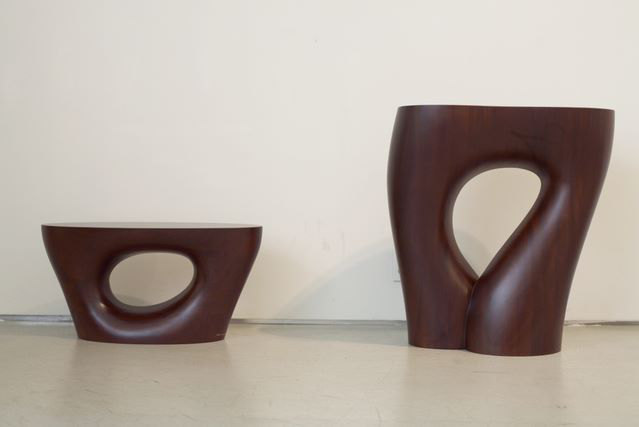
Image from artist’s 2008 solo exhibition at Gallery HANGIL, in Paju, Korea.
These stools are abruptly flat on top while their legs curve elegantly outwards until reaching the floor, a matching pair in deep mahogany. The left-hand stool is punctured by an asymmetrical hole, like a perfect tree had grown around a dinosaur egg only to be turned into a chair. The stool on the right stretches higher, an upside-down tear shape cut out of its middle makes it look more like women’s legs cut off at the hip or a really groovy pair of flared jeans.
The chair below appears the most dangerous for actual sitting, but thanks to very heavy weights, balance only looks like it would be a problem. Have you ever gone to sit down when your friend pulled out the chair beneath you because he thought it would be hilarious to see you fall on your ass? That reactionary feeling of uncertainty – a subconscious verification of free fall, is what these works evoke, because to sit in them would mean trusting in the artist more than what your own eyes tell you.
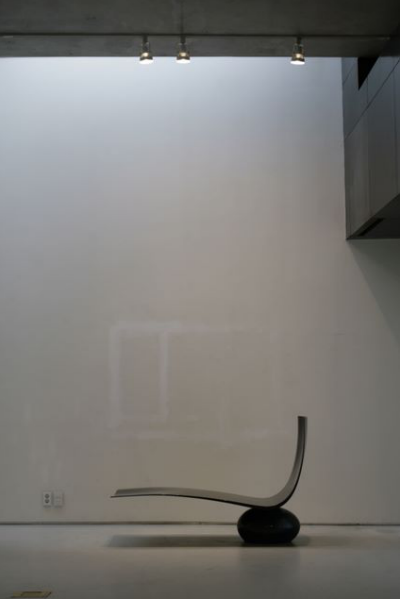
Image from artist’s 2008 solo exhibition at Gallery HANGIL, in Paju, Korea.
Choi currently works as a dean and professor at Hongik University’s College of Fine Arts in Seoul, South Korea. He previously worked as the director of Hongik’s Museum of Art and his work can be found in nearly every museum in Korea including the Seoul Metropolitan Museum of Art and the National Museum of Contemporary Art. In addition to seating, he also constructs intricate sculptures along with tables and other kinds of furniture that can be improved aesthetically.
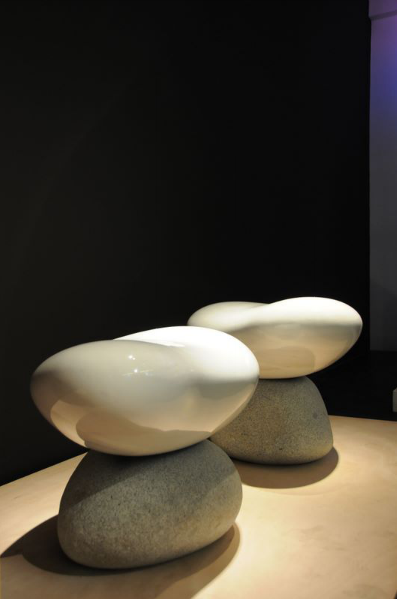
Image from artist’s 2010 solo exhibition at galerieDOWNTOWN, in Paris.
See more of Choi’s work on his website.
Mar 13, 2013 | art fairs, painting
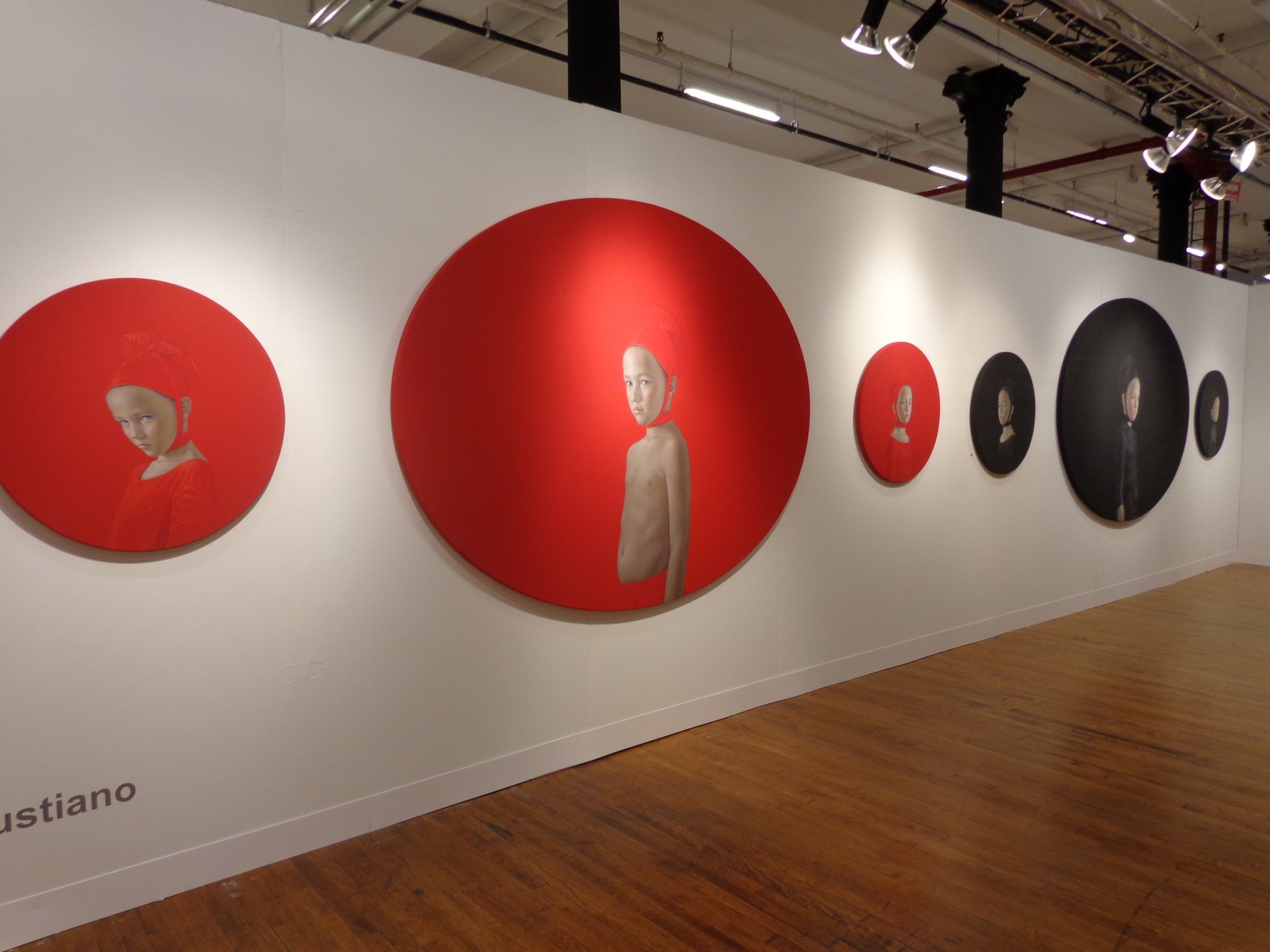
It’s arresting – seeing six symmetrical circles holding the faces of little scowling children, all spread across the wall, three red paired against three black. Cast in Renaissance clothing, these children wear the exact color of the background, making the definition between the two an act of magic. Your eyes tell you where the headdress stops and where her shirt begins, but they only know because of delicate shadows and folds that are obvious in some places, but left invisible where the painted fabric is as tight as the canvas.
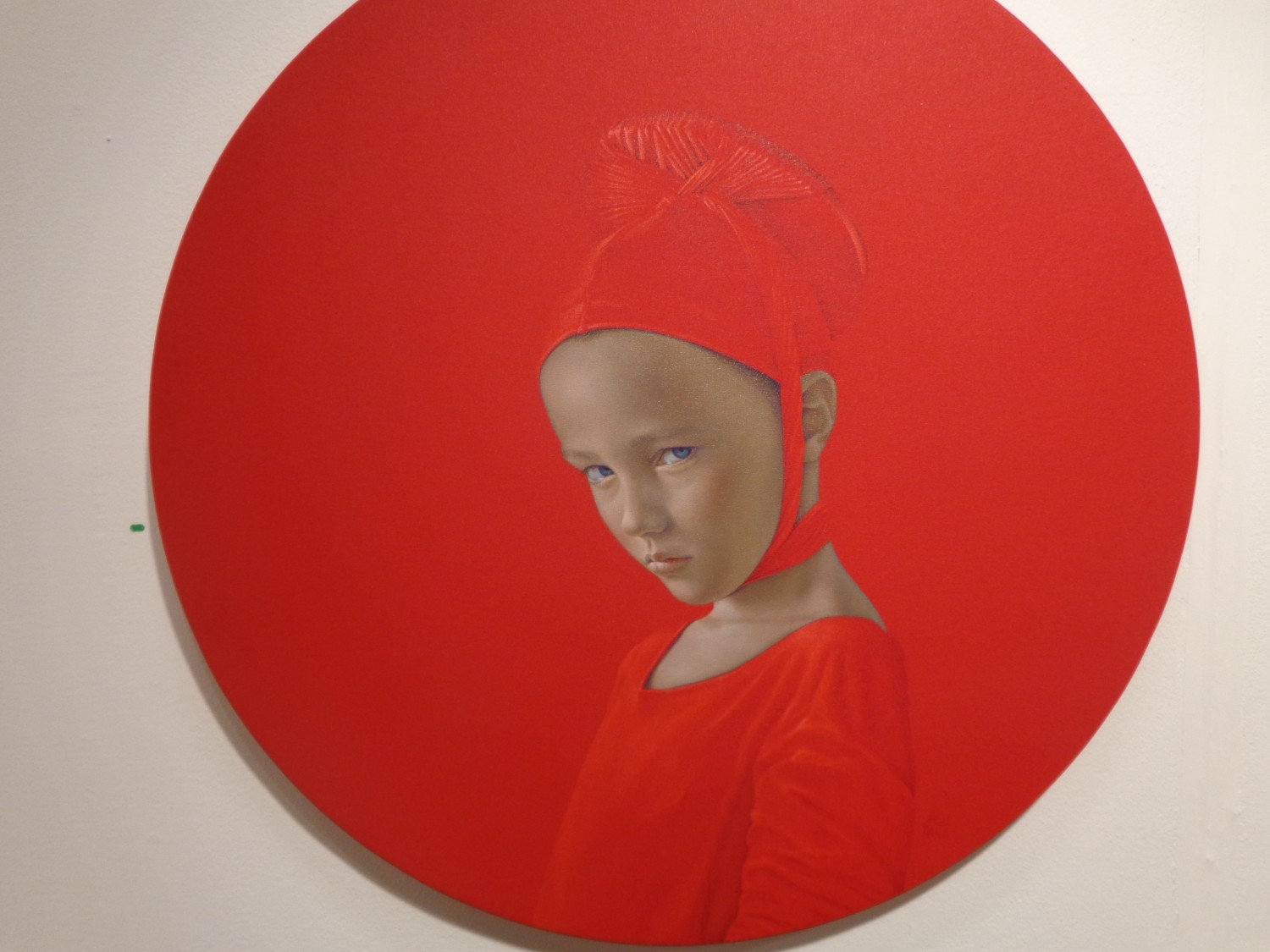
It’s hard to tell whether these are all the same little boy or girl – all of their faces have the same elegant roundness, the same crystal blue eyes and the same smooth perfect skin. But their expressions are subtly different – the four within the smaller circles seem to hold more contempt in their eyes, like they’re upset with how small their worlds are compared to the two children within the larger circles, whose expressions lie closer to curiosity or suspicion.
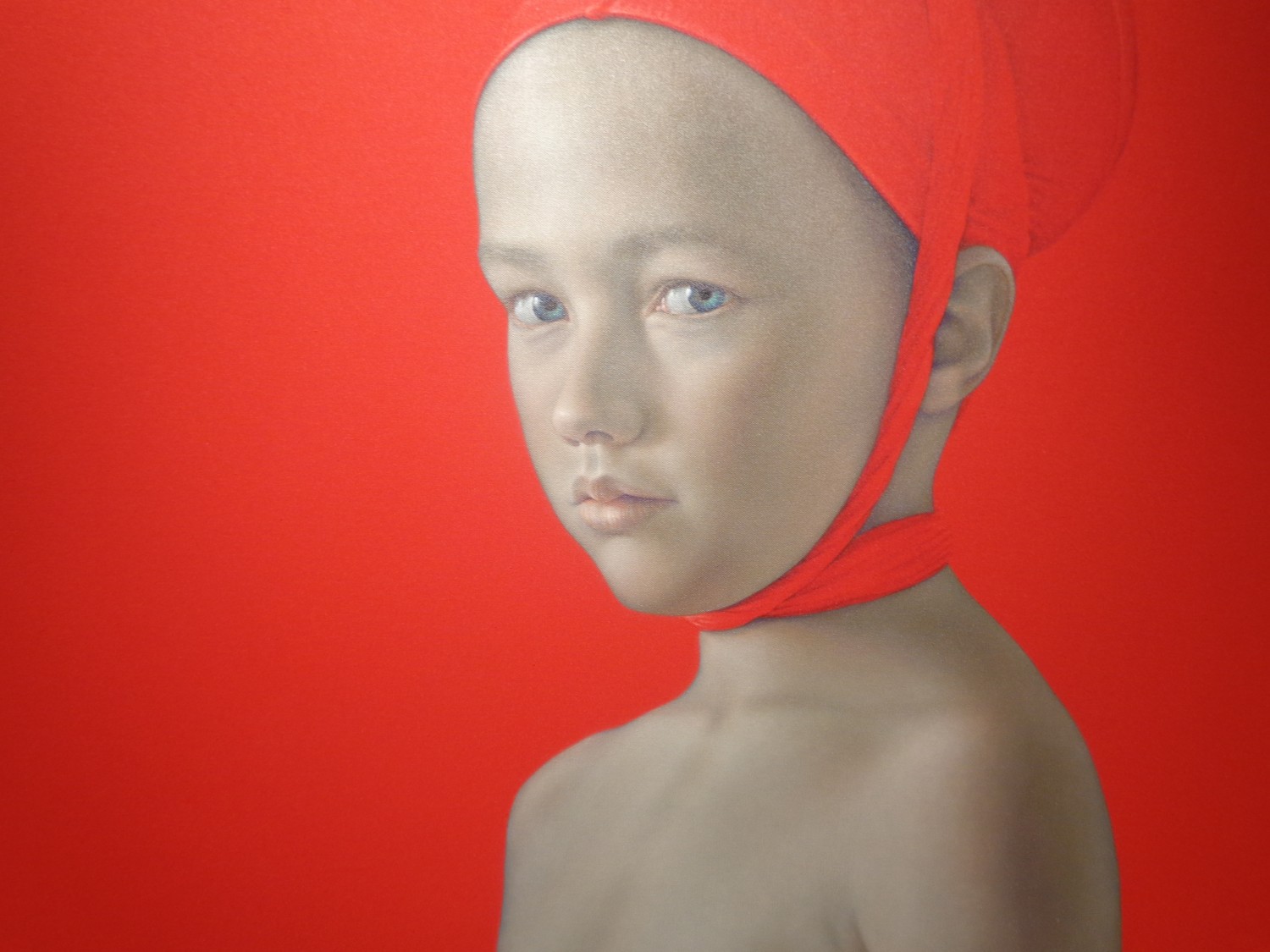
The only element offsetting perfect symmetry here comes in the clothing of these two children within the largest circles. The boy in red is bare-chested, wearing only a headdress while the child in the large black oval wears a shiny black shirt that grips his little body so tight he might as well not be wearing it at all.
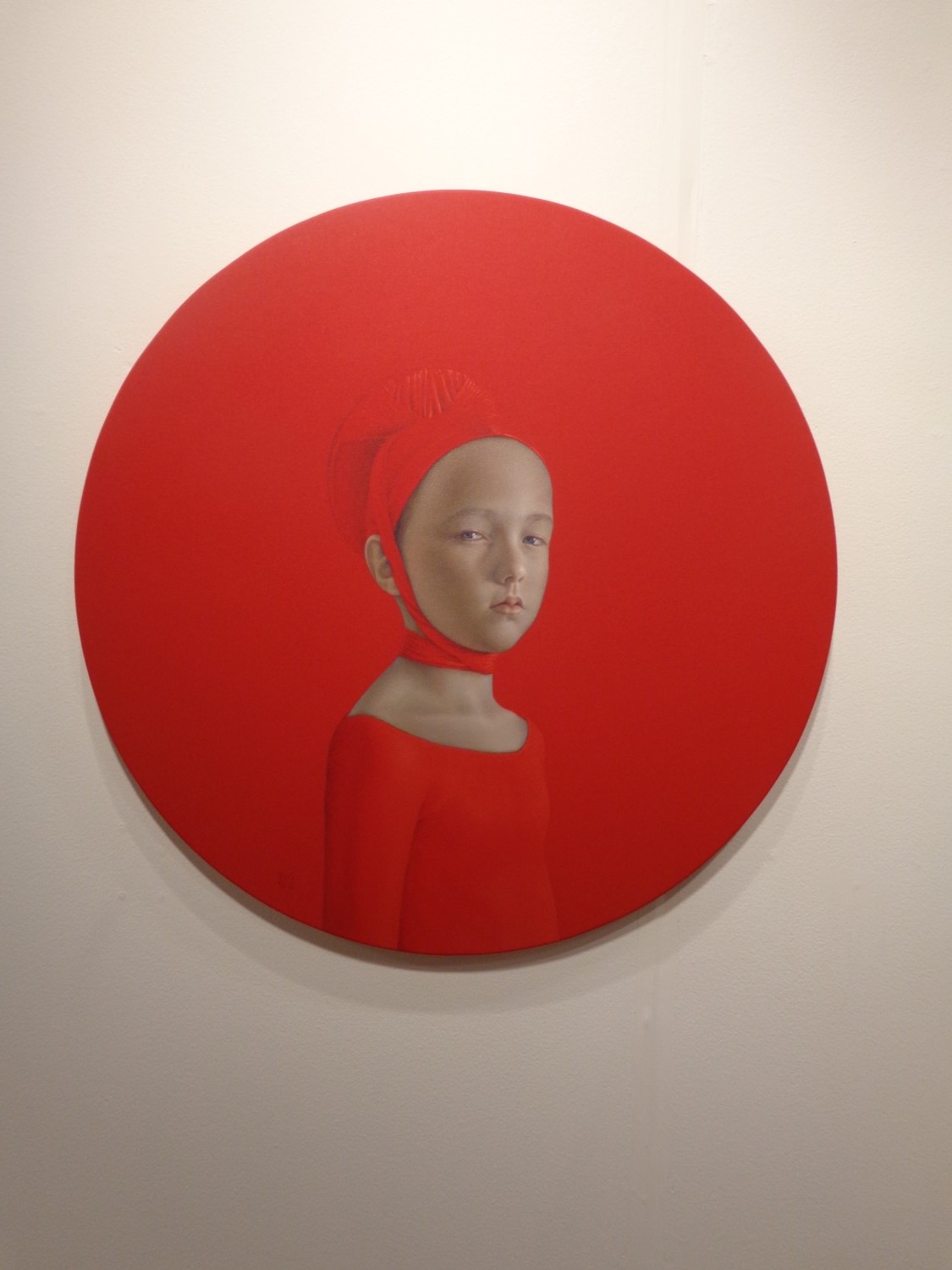
The largest circles are stretched wider to form more of an oval shape – the smaller perfect circles play a supporting role by framing their larger counterpart and interacting with the opposite color across the wall. The abrupt visual contrast of the black versus red, along with the dagger stares coming from intense perfect children makes the whole wall come alive with ideas about conflict and disdain, youth and maturity. And the Renaissance headdresses hint at an address of institutionalized religion or just religion as a whole.
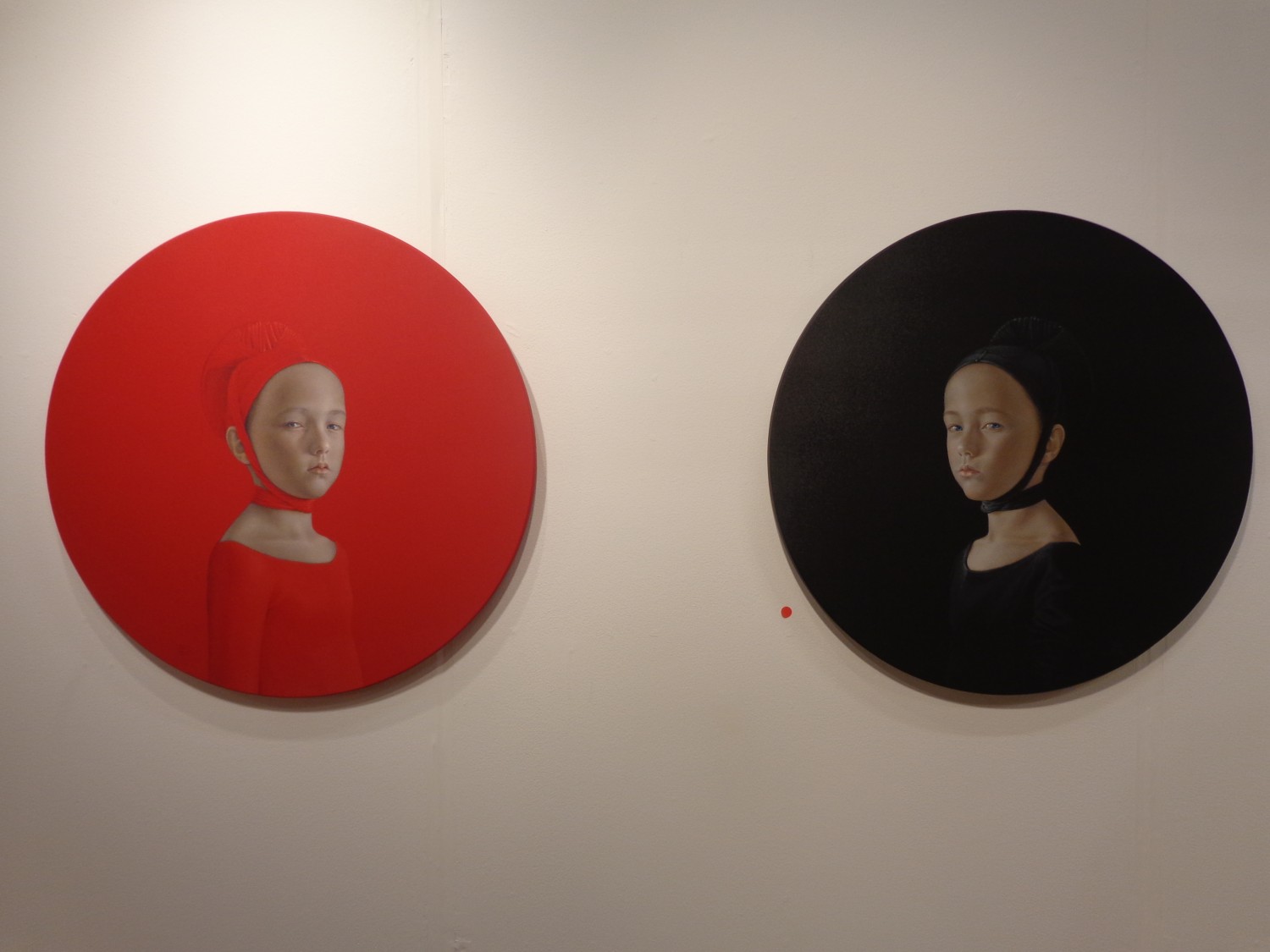
Perhaps the most dynamic part comes where the two colors meet – both children with the exact same grimacing glare pointed right at us, although it really seems like their unhappiness is actually rooted in their physical closeness to the antidote – the opposite color with a contrast too strong to look directly at.
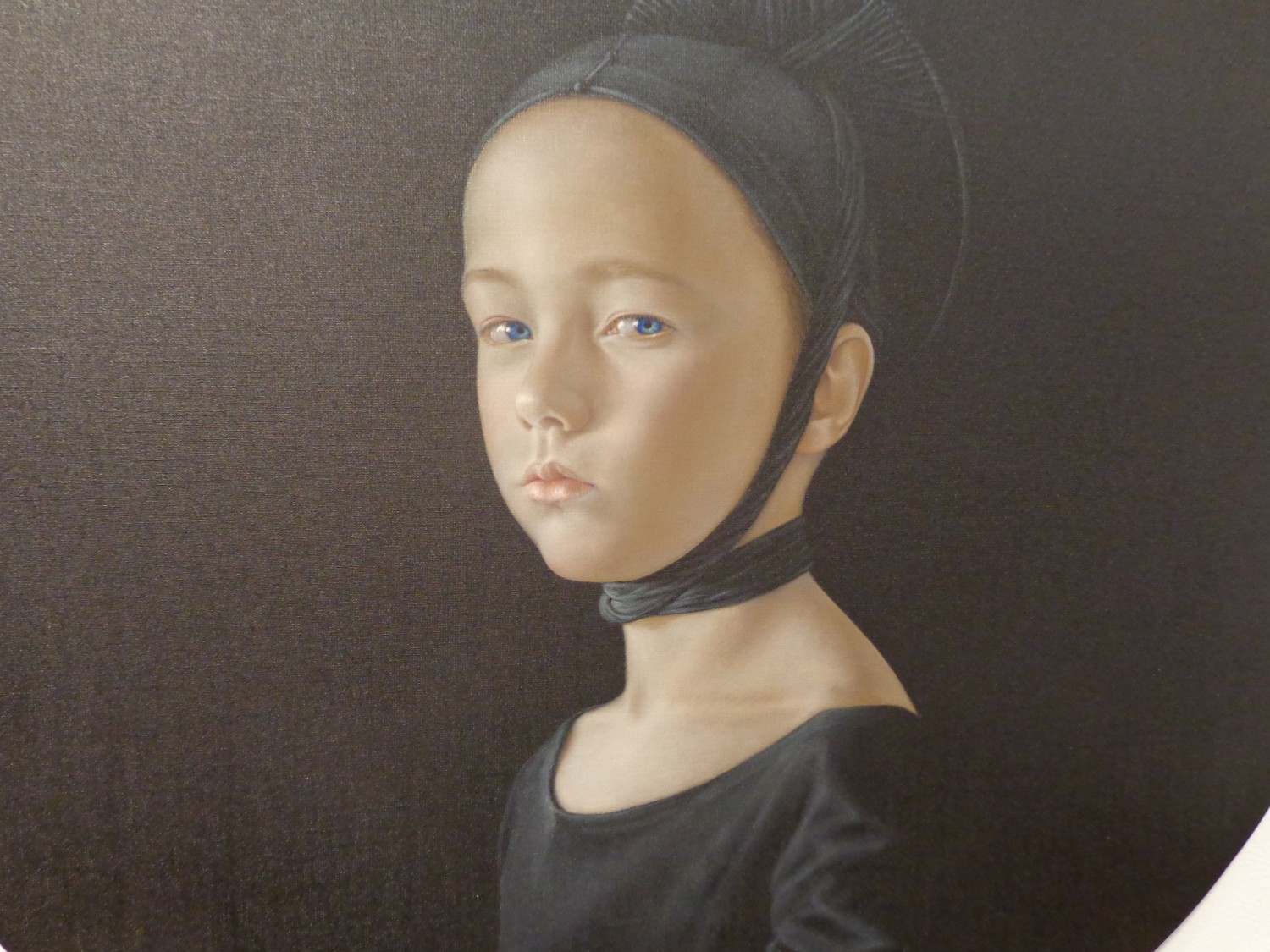
Born in Seville, Spain in 1965, Salustiano has an exhibition list too long for even multiple pages on his website. He’s shown between 10-20 exhibitions per year since 2001, and began all the way back in 1994. Beginning in Spain, then moving to Portugal in 1999, he showed in Italy in 2000 and New York City in 2001, and has since had work displayed all over the world, from Seoul to Salzburg to Moscow.
Salustiano’s VOLTA comment read:
“For me, emotion is a key word in contemporary art and should continue to be so in the future. In recent years in the art world, artists have tried to flee from ’emotion’: saturated with every kind of visual stimulus, they have been more concerned with making an ‘impact’ on the spectator than in touching an emotional fibre. I strongly believe that emotion should be the principal motivation and purpose of the artist. For centuries art has emotionally impacted upon, moved or even perturbed the spectator; and this ‘interior’ movement has contributed to the evolution of mankind. I also think that even if the artist intends to stimulate the intellect of his or her audience, then this should be done through ’emotion’….”
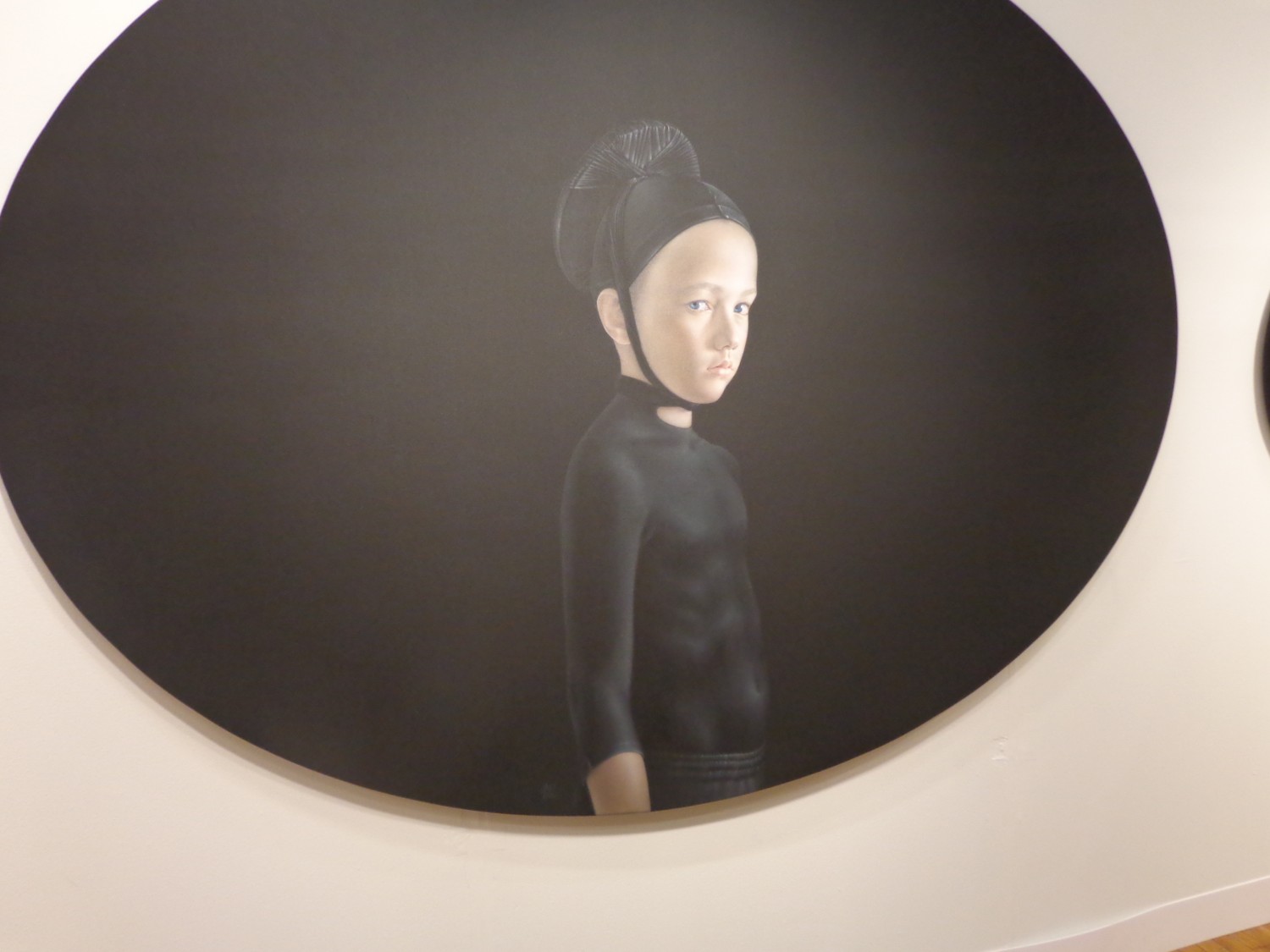
For more of Salustiano’s work, see his website.
All photographs taken by Lindsey @VOLTA NY ’13 where Salustiano was represented by KAVACHNINA CONTEMPORARY in Miami.
Mar 12, 2013 | installation, painting
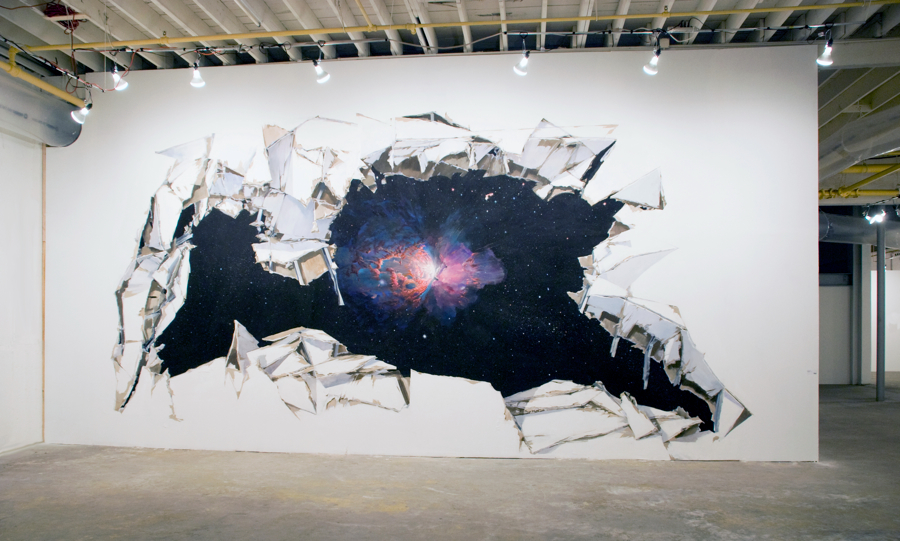
“Stardust,” 2010.
flash acrylic paint on tyvek
12 x 30 feet (144 x 360 inches) Image from artist’s website.
“Stardust” is a flash of make-believe, tricking your eyes into seeing something only found through a very powerful telescope or on the background of a Mac. The wall is painted like its falling apart, crumbling to reveal the image that’s breaking through behind. A star appears to be exploding – mid-transition on its way to becoming a white dwarf or a black hole – something other than what it used to be. With an asymmetrical form glowing bright, white light springs from the center while the rest of it shines red through the clouds that cover it.
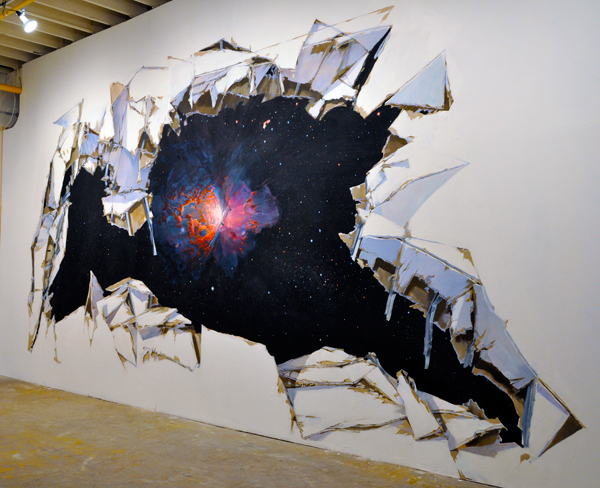
Image via Slow Show.
Adam Cvijanovic is a 54-year-old artist born in Cambridge, MA and now living in New York City. His work has been featured in the New York Times, Time Out NY, the New Yorker, along with ArtSlant, ARTnews, and Art Forum. He is currently represented by Postmasters Gallery in New York, and according to his CV he was continuously creating and exhibiting work from the mid-eighties until 2010, but hasn’t publicized making anything since.
For more of Adam’s work, see his Postmasters profile.
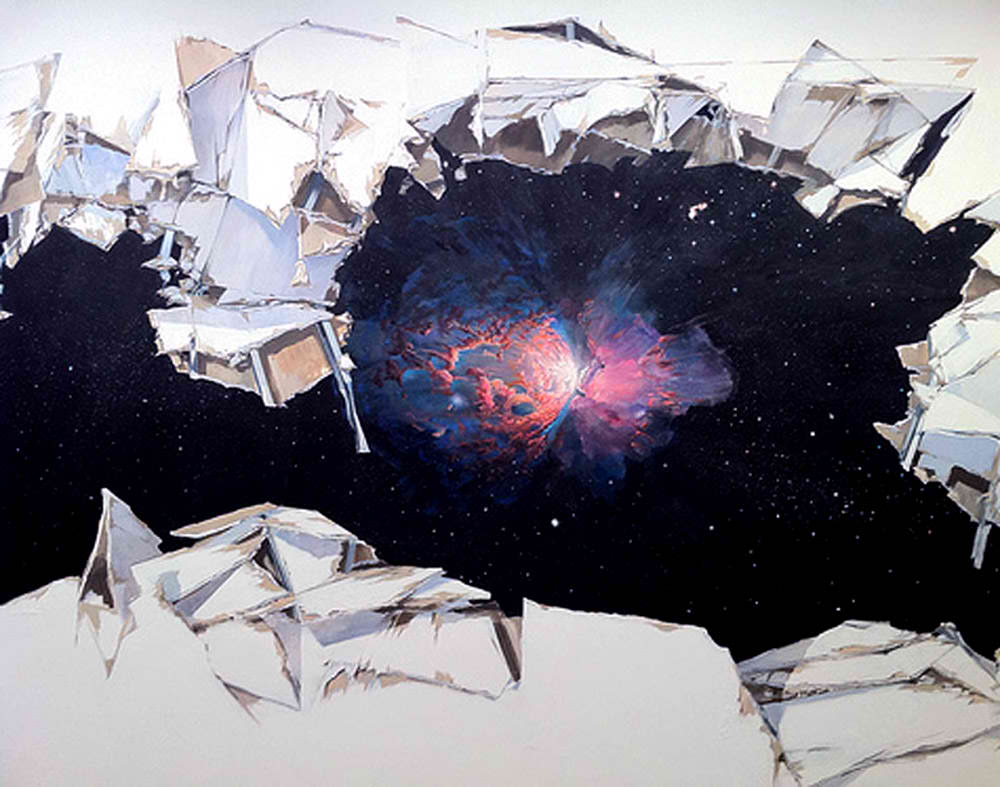
Image via Slow Show.




















